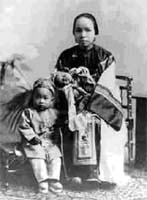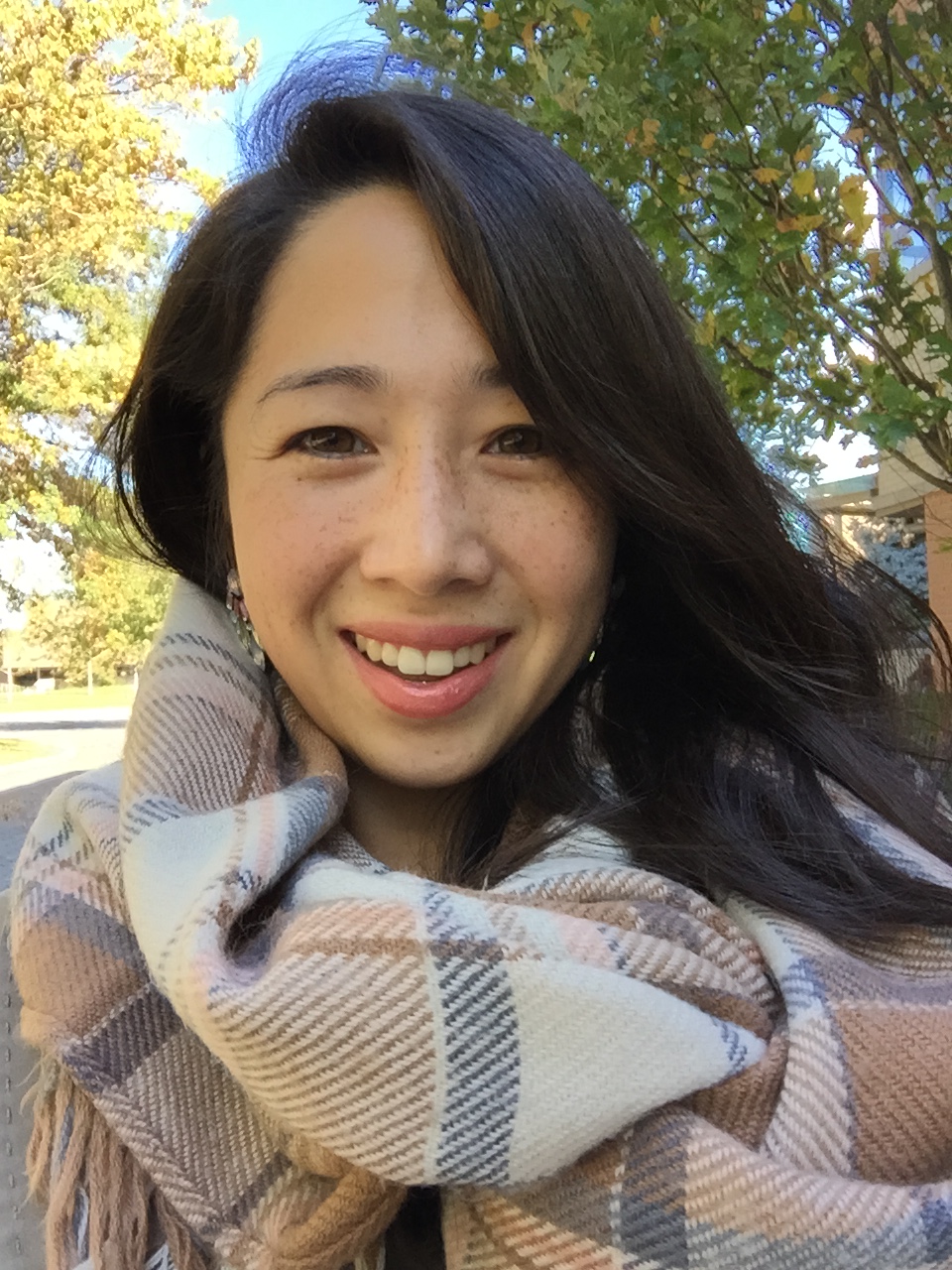
Have you ever read a book called Jin Guo? Probably not. It’s a history of the earliest Chinese Canadian women. On page 100 is a photo of a first generation Chinese Canadian woman, Haw Chow See, holding her Canadian-born daughter Avis. Avis is my great-grandmother. The photo is dated 1897 and its one of the earliest records I have of my mother’s family in the Americas. Since that photo, three more generations of my family have lived in Canada and the United States. That makes me a fifth generation Chinese American.
In some ways, I’m connected to Chinese American/Asian American culture because my parents actively chose to preserve those cultural connections — I grew up on the border of Boston’s Chinatown; went to a bilingual English/Cantonese elementary school; and attended Chinese School every Saturday, where I ate Cup Noodles and learned traditional Chinese dance. In other ways, my version of Asian America is different than many of my first and second generation friends — my parents both grew up speaking English (so did their parents, for the most part); I never felt any serious pressure to conform to Asian whiz kid standards (I had to ask my parents to let me take piano lessons); and no one ever made fun of the school lunches my mom packed for me (perfectly American turkey sandwiches, accompanied by apples and bags of chips).
There’s been a lot of talk lately about whiteness and librarianship (Hathcock, 2015, Vinopal, 2016, Bourg, 2016). To recap, librarianship is very, very white. 88 percent of credentialed librarians are white, compared with 63.7 percent of the general US population. For Asian and Pacific Islander Americans, we represent 2.7 percent of credentialed librarians and 4.8 percent of the general US population (ALA, 2012, US Census Bureau, 2014). Retention of librarians from underrepresented populations is low. And to succeed as a librarian of color, librarians of color do better when they act like their white colleagues.

How does this relate to my story? In one-on-one interactions, I generally feel racialized as an Asian American — people asking where I’m from (where I’m really, really from); romantic partners who have asked me to straighten my hair to look more exotic; a patron who told me that he preferred to “wait for the real librarian”. I also embody several types of privilege — I’m the college-educated daughter of college-educated parents; I speak with a “neutral” American accent; I have a name that lets me pass for white on paper. I recognize these privileges.
Still, I’m unsettled by this idea of “performing” or “playing” at whiteness. I don’t believe that I am un-Asian American, or inauthentic because I embody privilege. I am a privileged, fifth generation, mixed race Asian American. I prefer the term “code-switching”. Code-switching refers to the different dialects (and their related behavior and body language) that multi-cultural and multi-lingual individuals move between depending on who they’re interacting with (Demby, 2013). The ability to code-switch is still a privilege, but I prefer this concept because it deemphasizes the idea of authenticity, in favor of emphasizing identity as fluid and context dependent. The persona I project at work is no less authentic than the persona I display with my family or with my heavily Asian-American church. Nor is any one persona a complete version of myself.
Sometimes code-switching is a matter of choice, like my “professional no-jargon voice” that I use when talking to students, faculty, and the public. And sometimes code-switching is a pure necessity. When I’m at a restaurant surrounded by fluent Chinese speakers of any dialect, I let other people do the ordering. But, if you were at the APALA lunch at ALA Midwinter this year, you heard me flip between English and heavily accented Mandarin and Cantonese trying to order vegetables off the menu because they don’t come around on the carts.
Resources
- American Library Association. “Diversity Counts 2012 Tables.” ALA: Diversity Counts Website. 2012. http://www.ala.org/offices/sites/ala.org.offices/files/content/diversity/diversitycounts/diversitycountstables2012.pdf
- Bourg, Chris. “whiteness, social justice and the future of libraries.” Feral Librarian, January 9, 2016. https://chrisbourg.wordpress.com/2016/01/09/whiteness-social-justice-and-the-future-of-libraries/.
- Chinese Canadian National Council. Jin Guo: Voices of Chinese Canadian Women. Toronto: Women’s Press, 1992.
- Demby, Gene. “How Code-Switching Explains the World.” NPR code switch. April 8, 2013. http://www.npr.org/sections/codeswitch/2013/04/08/176064688/how-code-switching-explains-the-world
- Hathcock, April. “White Librarianship in Blackface: Diversity Initiatives in LIS.” In the Library with the Lead Pipe, October 7, 2015. http://www.inthelibrarywiththeleadpipe.org/2015/lis-diversity/.
- US Census Bureau. “Population Estimates, 2010.”
- Vinopal, Jennifer. “The Quest for Diversity in Library Staffing: From Awareness to Action.” In the Library with the Lead Pipe, January 13, 2016. http://www.inthelibrarywiththeleadpipe.org/2016/quest-for-diversity/

